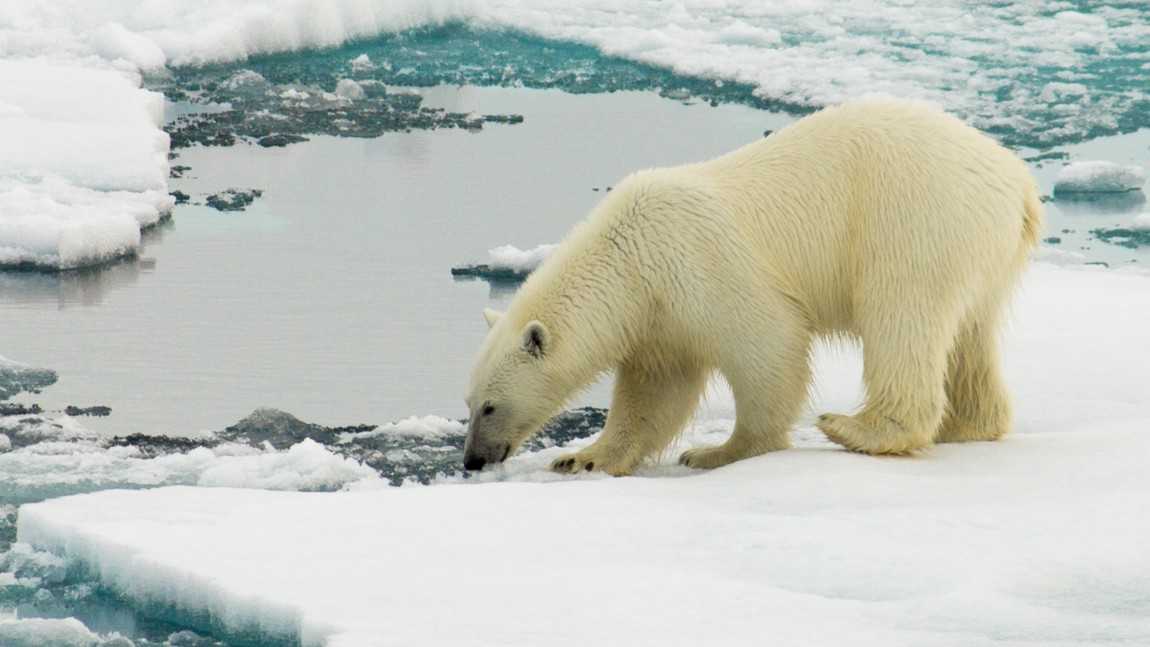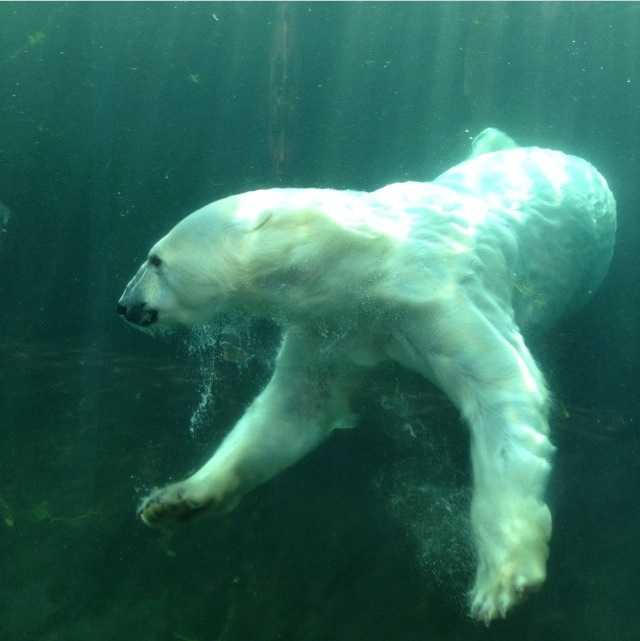The polar bear is a hypercarnivorous bear whose native range lies largely within the Arctic Circle, encompassing the Arctic Ocean, its surrounding seas and surrounding land masses.
Although most polar bears are born on land, they spend most of their time on the sea ice.
Polar bears hunt their preferred food of seals from the edge of sea ice, often living off fat reserves when no sea ice is present.

Polar Bear facts
Polar bears are largest species of bears.
Polar bears are the largest land predators.
Polar bears are actually omnivores.
During the summer, bears like to eat berries.
They live in Arctic region of Russia, Alaska, Canada, Greenland, and Norway.
Canada has roughly 60% of the whole population.
Due to their size, they have no natural enemies, except humans.
Polar bears can smell their prey for at least 1 kilometer away.
Polar bears live 15-18 years in the wild.
Polar bears can live up to 30 years in captivity.
Polar Bear can run at 25 miles per hour.
Polar bears weigh between 150 to at least 600 kg.
Females are two times smaller than males.
Newborn polar bears weigh just like a guinea pig.
There are at least 26,000 polar bears in existence.
Mating season is reserved for April and May.
Female polar bears can conceive at least 5 litter cubs in its lifetime.
Female gives birth to 1-3 cubs in November or December.
Female polar bears give birth in dens to protect the cubs.
The cub follows the mother polar bear for 2 years.
Polar bear’s staple food are seals.
A single seal could keep a polar bear full for 8 days.
The skin of the polar bears is actually black in color.
Polar bears do not hibernate during the winter months.
Polar bears have a layer of blubber which keeps them insulated from the cold.
Polar bears can swim up to 6 miles per hour.
Polar bears can swim up to 70-100 miles at once.
Polar bears spend most of their time in the water.
A hybrid of grizzly and polar bears exists in Canada.
Polar bears have webbed toes and wide paws.
The Inuit people refer to polar bears as nanuq.
Meanwhile, Russia calls them medved, which translates to White Bear.
In Denmark and Norway, locals refer to them as isbjorn, which means Ice Bear.

